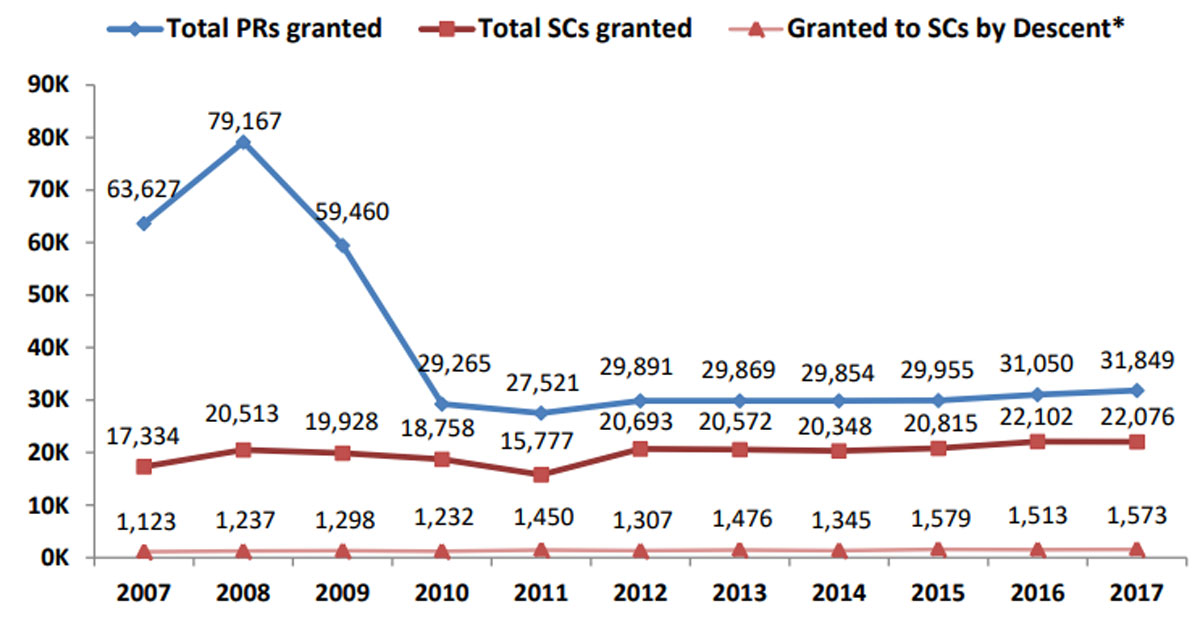Singapore’s population has hit 5.64 million in June 2018.
To mitigate the shrinking size and ageing profile of Singapore’s citizen population, Singapore grants between 15,000 and 25,000 new citizenships annually.
These statistics are according to the annual Population in Brief 2018 report released on Sept. 27 this year.
Number of PRs stabilised
So what about the number of permanent residents in Singapore over the past decade?
Check out the blue line in the graph above.
It shows exactly the number of PRs granted by Singapore over the years.
The clear spike in the 2007, 2008 and 2009 years proved unsustainable, which partly contributed to the vote losses for the ruling People's Action Party (PAP) in the 2011 General Election.
Putting numbers into perspective
To help put things in perspective: In those three years of free-wheeling liberal immigration policy from 2007, 2008 to 2009, a total of 202,254 PRs were accepted.
In the following seven years, in 2010, 2011, 2012, 2013, 2014, 2015 and 2016, Singapore accepted a total of 207,405 PRs.
Therefore, it took seven years to achieve approximately the same number of PRs in the preceding three years.
A more sustainable increase
Singapore's current approach to granting PRs is more calibrated and scaled down vastly.
Permanent residence is an intermediate step through which suitable foreigners and spouses take up citizenship in Singapore.
These new citizens have family ties with Singaporeans or have either studied, worked or lived here for a period of time.
Since the tightening of the immigration framework in late 2009, Singapore has accepted about 30,000 new PRs a year.
[related_story]
This keeps the PR population stable and ensures a pool of suitable candidates who are familiar and committed to Singapore who may be considered for citizenships.
The majority of our PRs are in the prime working ages of 25 to 49 years.
If you like what you read, follow us on Facebook, Instagram, Twitter and Telegram to get the latest updates.
